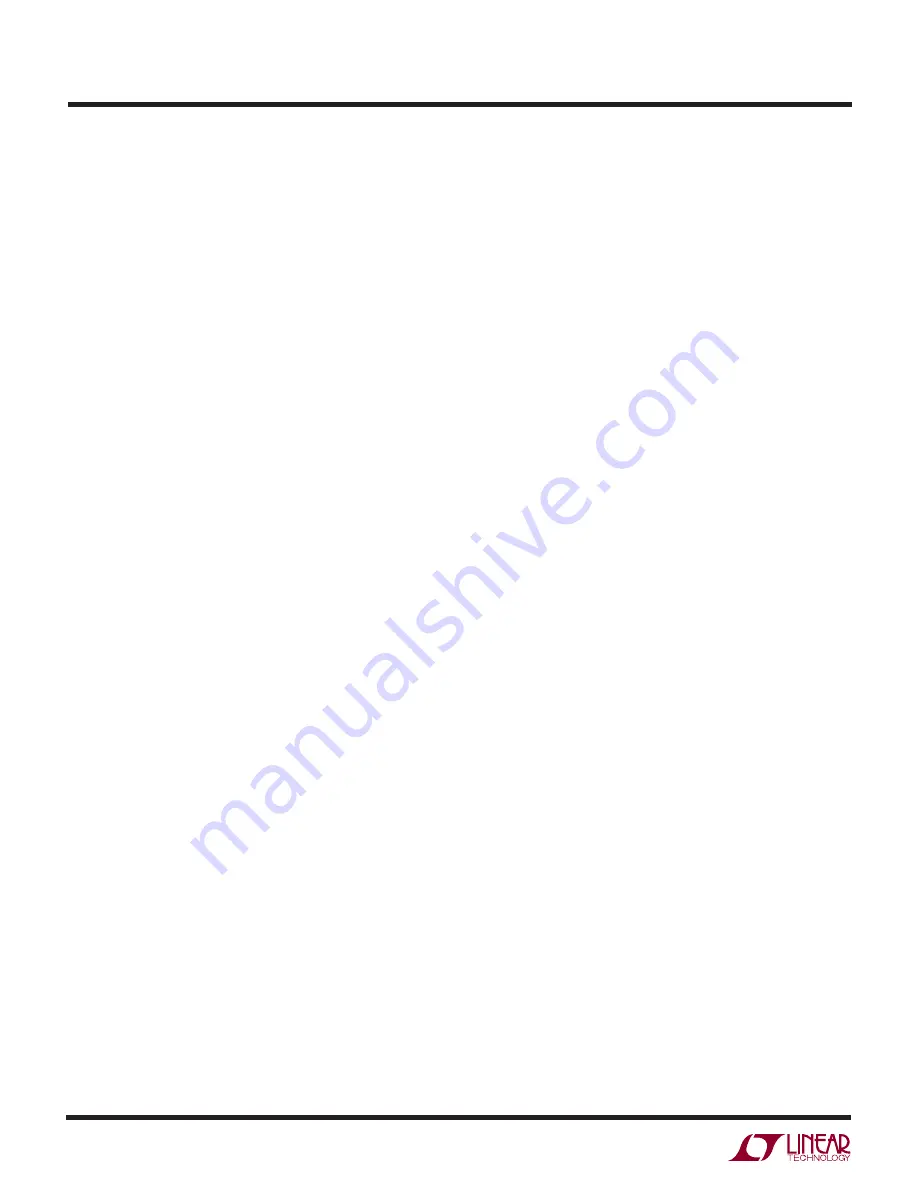
22
LTC3736
3736fa
continuous mode is selected and the duty cycle falls below
the minimum on-time requirement, the output will be regu-
lated by overvoltage protection.
Efficiency Considerations
The efficiency of a switching regulator is equal to the
output power divided by the input power times 100%. It is
often useful to analyze individual losses to determine what
is limiting efficiency and which change would produce the
most improvement. Efficiency can be expressed as:
Efficiency = 100% – (L1 + L2 + L3 + …)
where L1, L2, etc. are the individual losses as a percentage
of input power.
Although all dissipative elements in the circuit produce
losses, five main sources usually account for most of the
losses in LTC3736 circuits: 1) LTC3736 DC bias current,
2) MOSFET gate charge current, 3) I
2
R losses, and
4) transition losses.
1) The V
IN
(pin) current is the DC supply current, given in
the electrical characteristics, excluding MOSFET driver
currents. V
IN
current results in a small loss that in-
creases with V
IN
.
2) MOSFET gate charge current results from switching the
gate capacitance of the power MOSFETs. Each time a
MOSFET gate is switched from low to high to low again,
a packet of charge dQ moves from SENSE
+
to ground.
The resulting dQ/dt is a current out of SENSE
+
, which is
typically much larger than the DC supply current. In
continuous mode, I
GATECHG
= f • Q
P
.
3) I
2
R losses are calculated from the DC resistances of the
MOSFETs and inductor. In continuous mode, the aver-
age output current flows through L but is “chopped”
between the top P-channel MOSFET and the bottom
N-channel MOSFET. The MOSFET R
DS(ON)
s multiplied
by duty cycle can be summed with the resistance of L
to obtain I
2
R losses.
4) Transition losses apply to the top external P-channel
MOSFET and increase with higher operating frequen-
cies and input voltages. Transition losses can be esti-
mated from:
Transition Loss = 2 (V
IN
)
2
I
O(MAX)
C
RSS
(f)
Other losses, including C
IN
and C
OUT
ESR dissipative
losses and inductor core losses, generally account for less
than 2% total additional loss.
Checking Transient Response
The regulator loop response can be checked by looking at
the load transient response. Switching regulators take
several cycles to respond to a step in load current. When
a load step occurs, V
OUT
immediately shifts by an amount
equal to (
∆
I
LOAD
)(ESR), where ESR is the effective series
resistance of
COUT
.
∆
I
LOAD
also begins to charge or dis-
charge C
OUT
, which generates a feedback error signal. The
regulator loop then returns V
OUT
to its steady-state value.
During this recovery time, V
OUT
can be monitored for over-
shoot or ringing. OPTI-LOOP compensation allows the
transient response to be optimized over a wide range of
output capacitance and ESR values.
The I
TH
series R
C
-C
C
filter (see Functional Diagram) sets
the dominant pole-zero loop compensation. The I
TH
exter-
nal components shown in the Typical Application on the
front page of this data sheet will provide an adequate
starting point for most applications. The values can be
modified slightly (from 0.2 to 5 times their suggested
values) to optimize transient response once the final PC
layout is done and the particular output capacitor type and
value have been determined. The output capacitors need
to be decided upon because the various types and values
determine the loop feedback factor gain and phase. An
output current pulse of 20% to 100% of full load current
having a rise time of 1
µ
s to 10
µ
s will produce output
voltage and I
TH
pin waveforms that will give a sense of the
overall loop stability. The gain of the loop will be increased
by increasing R
C
, and the bandwidth of the loop will be
increased by decreasing C
C
. The output voltage settling
behavior is related to the stability of the closed-loop
system and will demonstrate the actual overall supply
performance. For a detailed explanation of optimizing the
compensation components, including a review of control
loop theory, refer to Application Note 76.
A second, more severe transient is caused by switching in
loads with large (>1
µ
F) supply bypass capacitors. The
discharged bypass capacitors are effectively put in parallel
with C
OUT
, causing a rapid drop in V
OUT
. No regulator can
APPLICATIO S I FOR ATIO
W
U
U
U







































